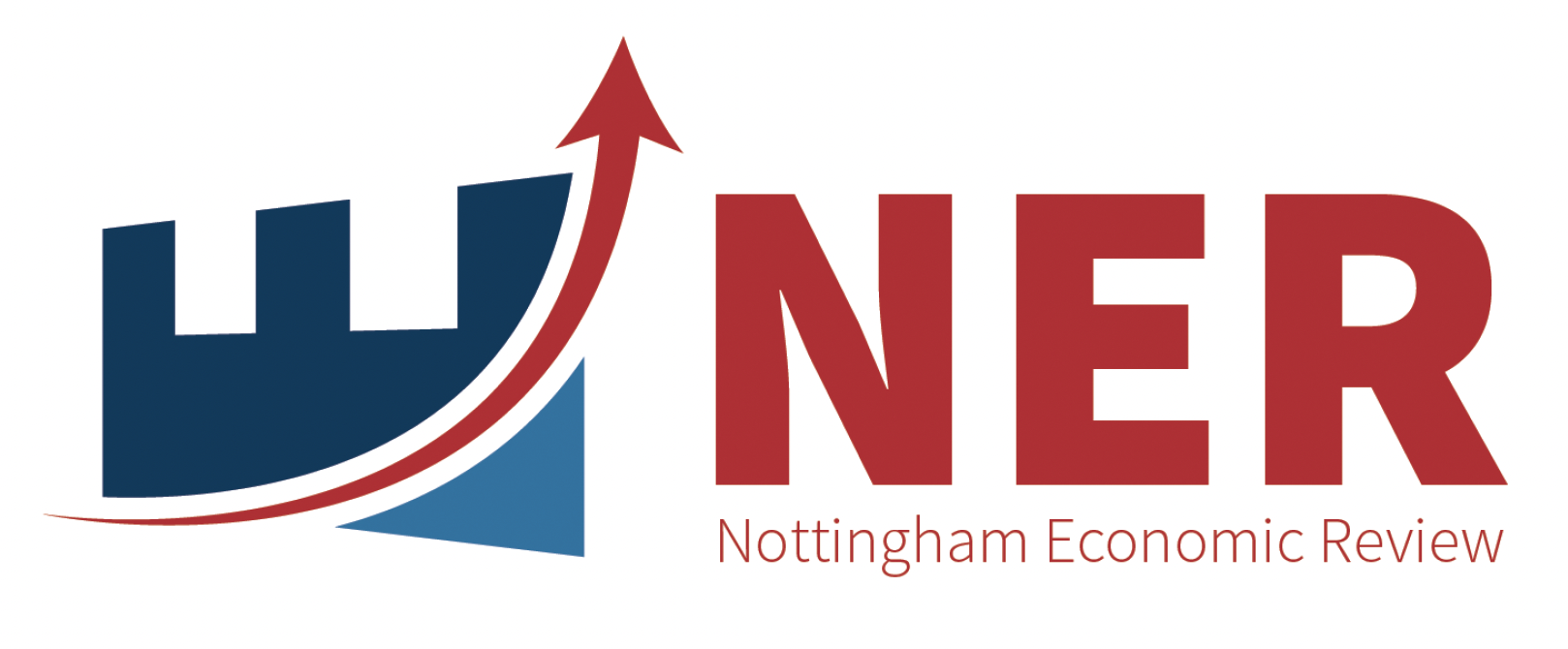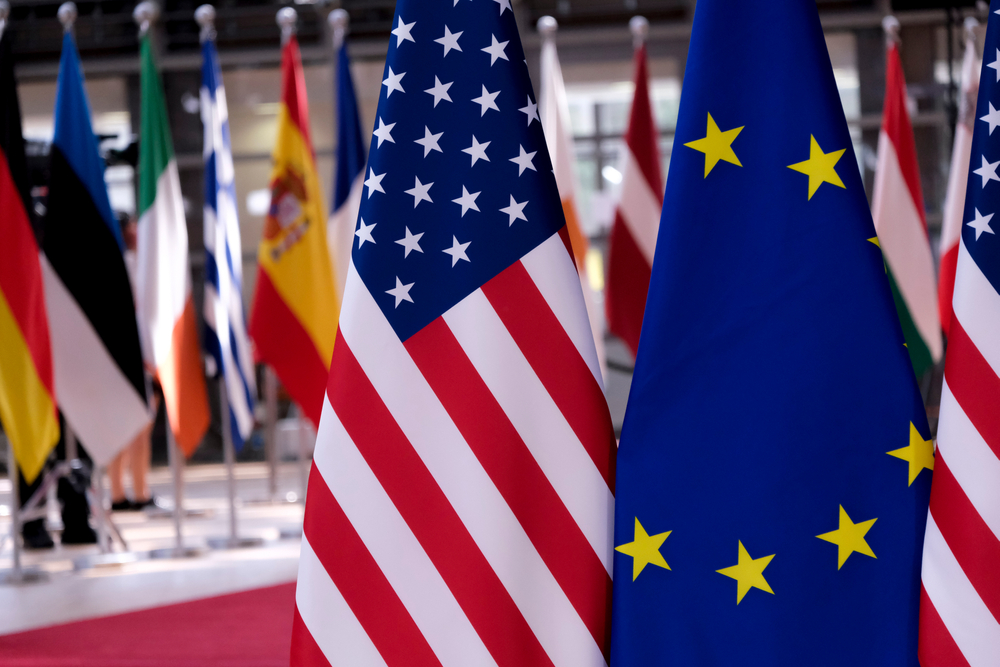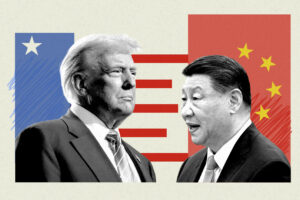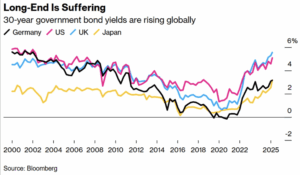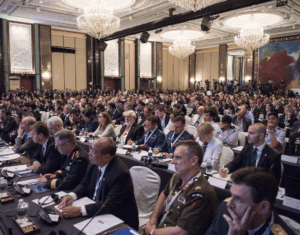Donald Trump was inaugurated as the 47th President of the United States on January 20th, 2025. Wasting no time, he swiftly signed a series of executive orders aimed at reshaping both domestic and foreign policy. However, it was his foreign policy pronouncements that captured international attention, particularly in Europe. Statements on tariffs, Ukraine, and Greenland have provoked sharp criticism from European leaders, heightening transatlantic tensions to levels not seen since his first term.
Trump’s Tariff Gamble: Protectionism or Economic Backfire?
Among the most contentious of Trump’s principal promises during his campaign was the imposition of tariffs designed to protect American industries from foreign competition. While tariffs have historically been a source of government revenue, their modern role is primarily protectionist, shielding domestic markets from foreign competition (Kane, Rutter & Pope, 2020). Though theoretically levied on foreign suppliers, the costs of tariffs are inevitably passed on to domestic consumers, raising prices on both imported goods and those relying on foreign components in their production chains. The Peterson Institute for International Economics estimates that the burden of these tariffs will fall overwhelmingly on US consumers and firms, stating that it is ‘American consumers and firms [that] will bear the effect of higher tariffs’ (Contreras, Lovely & Yan, 2024). The Trump administration contends that such measures will revitalise American manufacturing, yet the economic strain this will place on households and firms is undeniable.

However, tariffs do not only impact domestic markets – they also reduce the competitiveness of foreign goods, damaging international producers and their respective economies. Consequently, the imposition of such trade barriers inevitably draw retaliation. This has been the case in Europe: on February 10, the Trump administration announced a 25% tariff on steel and aluminium with no exemptions (Holland, Lawder & Shalal, 2025). The European Union reacted swiftly, with the President of the European Commission, Ursula von der Leyen, stating that ‘[unjustified tariffs would] trigger firm and proportionate countermeasures’ (von der Leyen, 2025). French President Emmanuel Macron vowed to go ‘head-to-head’ with the American President over his aggressive trade policies, while Britain’s steel industry body called the decision a ‘devastating blow’ (Le Monde, 2025). These actions demonstrate that with European leaders preparing retaliatory measures, the prospects of escalating trade disputes loom, threatening economic relations between the US and its transatlantic counterparts.
An Erosion of Trust
Economic disputes are not the sole source of friction between the new American administration and Europe. Another flashpoint is President Trump’s proposed peace deal in Ukraine and his remarks concerning President Zelensky. Outrage erupted across Europe after it was revealed that the United States had engaged in negotiations with Russia, without including any European stakeholders or even Ukraine (Batchik, 2025; Allard, 2025). The exclusion of key parties from the talks was widely seen as undermining European interests and security, as well as Ukrainian sovereignty. However, the most incendiary moment came when Trump publicly labelled Zelensky a ‘dictator’ for failing to hold elections at the end of his five-year term as president in 2024 – despite the fact that elections cannot legally take place under martial law, which remains in effect in Ukraine. These remarks were met with strong condemnation from several European leaders, including the British Prime Minister Sir Keir Starmer, and German Chancellor Olaf Scholz (Chiacu & Harmash, 2025). Trump’s approach – questioning Ukraine’s leadership and excluding European allies from critical talks – has created rifts between the two continents and raised concerns about Western unity in an era of rising countermovements from China and Russia.
Following these remarks and actions from the Trump administration, Emmanuel Macron held emergency meetings in Paris with other European leaders to formulate a response Chiacu & Harmash, 2025), reflecting a growing sense of unease among European leaders particularly where defence is concerned. During his campaign, President Trump suggested that the United States may not assist European countries if they failed to meet defence spending targets – a stance which has intensified European anxieties about United States as a dependable ally (Spatafora, 2025). Such uncertainty has only deepened strained transatlantic tensions. Reflecting these concerns, Friedrich Merz, the newly elected German chancellor went so far as to ‘question the future of NATO’ and called for Europe to increase its independent defensive capabilities (Adler, 2025). These developments indicate that Europe may be adopting a more self-reliant security strategy, potentially reshaping the continent’s relationship w ith the US for years to come.

Will the Fractures become Permanent?
Beyond Ukraine, President Trump’s foreign policy decisions have sparked further outrage in Europe, most notably over Greenland. Despite Greenland’s longstanding ties to Denmark, Trump is seeking to acquire it, refusing to rule out ‘military force or economic coercion’ (Starcevic, 2025). According to the BBC, these ‘comments […] sent shockwaves through the Danish political establishment’ and they have had a similar effect in the rest of Europe. The idea of an American president brazenly threatening a NATO ally was once unthinkable, raising grave concerns about US credibility in the alliance.
Regardless of whether one agrees with Trump’s political decisions, one thing is certain, if tensions between the United States and its European allies continue to escalate, the global order will shift dramatically. With the emergence of China and other global powers, the world is becoming increasingly multipolar. However, for the first time in decades, it is no longer clear that Europe and the United States form a unified pole. As Donald Trump continues to pursue his policies, even against his allies, Europe will likely accelerate efforts to forge a more independent geopolitical path. If a true rupture materialises between North America and Europe, fragmenting what has long been deemed the “free world”, consequences for global stability could be seismic.
Reference List
Adler, K. (2025, February 24). New German leader signals seismic shift in transatlantic relations. Retrieved from: https://www.bbc.co.uk/news/articles/cpv4n0dg3v3o
Allard, L. (2025, February 20). France. In Atlantic Council What Europeans think of Trump’s approach to Ukraine (and what they might do next). Retrieved from: https://www.atlanticcouncil.org/blogs/new-atlanticist/experts-react/what-europeans-think-of-trumps-approach-to-ukraine-and-what-they-might-do-next/#united-kingdom
Batchik, J. (2025, February 20). European Union. In Atlantic Council What Europeans think of Trump’s approach to Ukraine (and what they might do next). Retrieved from: https://www.atlanticcouncil.org/blogs/new-atlanticist/experts-react/what-europeans-think-of-trumps-approach-to-ukraine-and-what-they-might-do-next/#united-kingdom
Chiacu, D. & Harmash, O. (2025, February 20). Trump tells ‘dictator’ Zelenskiy to move fast or lose Ukraine. Retrieved from: https://www.reuters.com/world/europe/zelenskiy-says-trump-is-disinformation-bubble-ukraine-2025-02-19/
Contreras, J., Lovely, M. E. & Yan, J. (2024, December 12). No trade tax is free: Trump’s promised tariffs will hit large flows of electronics, machinery, autos, and chemicals. Retrieved from: https://www.piie.com/blogs/realtime-economics/2024/no-trade-tax-free-trumps-promised-tariffs-will-hit-large-flows
Holland, S., Lawder, D. & Shalal, A. (2025, February 11). Trump raises tariffs on aluminum, steel imports in latest trade war salvo. Retrieved from: https://www.reuters.com/markets/asian-eu-steelmakers-shares-fall-after-trump-escalates-tariffs-2025-02-10/
Kane, J., Rutter, J. & Pope, T. (2020, April 7). Trade: tariffs. Retrieved from: https://www.instituteforgovernment.org.uk/explainer/trade-tariffs
Le Monde (2025, February 11). Trump imposes new 25% tariffs on steel and aluminum imports. Retrieved from: https://www.lemonde.fr/en/economy/article/2025/02/11/trump-signs-executive-orders-on-steel-and-aluminum-tariffs_6738008_19.html
Spatafora, G. (2025, February 17). The Trump card: What could US abandonment of Europe look like?. Retrieved from: https://www.iss.europa.eu/publications/briefs/trump-card-what-could-us-abandonment-europe-look
Von der Leyen, U. (2025, February 11). Statement by President von der Leyen on announced US tariffs.
